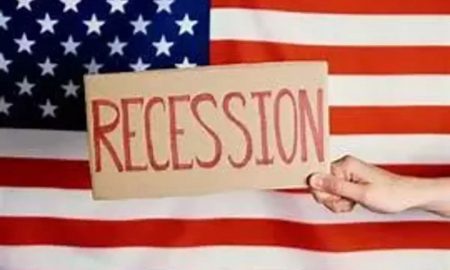
Here’s What You Need to Know About Negative Interest Rates

As an investor or someone who stays in the loop about money markets, you might know of the risks that come with inflation. It is a situation where the currency’s value takes a drastic plunge and the prices of goods skyrocket. Deflation happens to be a reduction in the pricing level. Plunging prices force the consumers to wait for the prices to come down.
This leads to a decrease in demand, which eventually leads to an increase in supply. Businesses are hardly able to make profits, which results in a decrease in wages and salaries of the employees. Central banks make an effort to leverage spending by making it easier for consumers to avail of loans. To achieve that, they introduce negative interest rates.
What Are Negative Interest Rates?
 Central banks use interest rates as a monetary tool to bring around inflation in a country’s economy. A central bank makes all efforts to fight deflation. It brings the interests down to allure businesses and consumers to avail more loans than they usually would.
Central banks use interest rates as a monetary tool to bring around inflation in a country’s economy. A central bank makes all efforts to fight deflation. It brings the interests down to allure businesses and consumers to avail more loans than they usually would.
This leads to an increase in demand, which causes prices to rise. This monetary policy is among the most traditional ones. Traditional monetary policies have not had much of an effect in the recent period. A new policy has been in the fray, which brings the interests down to beyond zero.
This particular move is to provide incentives to the banks so that they can lend money and influence consumers and businesses to spend at the same time, instead of shelling out fees just to keep their money in the accounts. Reports reveal that the European Central Bank came up with the negative interest rate policy in the year 2014. The Bank of Japan followed went on to introduce the same policy in 2016.
The Effect of Negative Interest Rates on Economics and Market
 According to a recent survey, both financial policymakers and economists are somewhat not in favor of the policy’s effectiveness. They argue that such a monetary policy would eventually force savers to shell out a penalty and borrowers getting paid. Such a situation is opposite to the circumstance which everyone is conversant with and used to. The effect of negative interest rates is quite cumbersome to quantify as it hasn’t been much in use over the past few years.
According to a recent survey, both financial policymakers and economists are somewhat not in favor of the policy’s effectiveness. They argue that such a monetary policy would eventually force savers to shell out a penalty and borrowers getting paid. Such a situation is opposite to the circumstance which everyone is conversant with and used to. The effect of negative interest rates is quite cumbersome to quantify as it hasn’t been much in use over the past few years.
Banks might not agree to expend the cost of negative interest rates to the customers. That’s because it might motivate them to shift their assets. In a scenario of this kind, negative interest rates would bring the profits down, which is discouraging enough for the banks. Consumers who have to shell out fees to store their money in an account might decide to extract their entre cash out at one go. This took place several times in the past.
The Impact on Foreign Exchange Market
 Concerning the foreign exchange market, these monetary policies have been on the positive side. When negative interests are put into action, investors look for better returns. This will directly impact the currency valuation of their country. However, if the negative interest rates grow popular across the world, this option might not be in place anymore.
Concerning the foreign exchange market, these monetary policies have been on the positive side. When negative interests are put into action, investors look for better returns. This will directly impact the currency valuation of their country. However, if the negative interest rates grow popular across the world, this option might not be in place anymore.
Takeaways for Investors
Negative interest rates foster borrowing habits in businesses. This is a booster for them to borrow and spend, and thus fuel money into the economy. This is a strategy to fight deflation. However, it is hard to quantify its effects as it’s not a very popular approach or one that’s in practice in many places. But we can be sure that the negative rate economy will leave the investors struggling to make a profit. That’s because most investors would seek to invest outside the United States if the interest rates fall beyond zero.
An investor’s goal is to reduce the impact of negative interest rates using a coping strategy. This way, you can reduce the risk levels once negative interest rates become the practice in the United States. Negative interest rates have their upsides and downsides. But going by what the experts have to say, introducing these policies will give a tough time to the savers. However, talking to your financial advisor should be able to help you find a way out of this predicament.
More in Big Bank Accounts
-
`
Curious About Travis Kelce’s Net Worth? Here’s the Scoop!
Travis Kelce’s name echoes through NFL stadiums, synonymous with athletic prowess and electrifying plays. But beyond his touchdown celebrations and record-breaking...
June 10, 2024 -
`
Everything You Need to Know About an Assumable Mortgage
What is an Assumable Mortgage? Whether you are a buyer or a seller, understanding the concept of assumable mortgages can open...
June 6, 2024 -
`
Layoff vs. Fired – Understanding the Crucial Differences
When it comes to job loss, understanding the distinction between being layoff vs. fired is crucial. While both situations result in...
May 30, 2024 -
`
When Are Business Taxes Due 2024? Essential Dates and Deadlines
Tax deadlines can be daunting, but fear not! Let’s break down everything you need to know to stay on top of...
May 22, 2024 -
`
How Much Does Jeff Bezos Make Per Hour? It’s More Than You Think!
Jeff Bezos, a name synonymous with innovation and wealth, stands as one of the world’s richest individuals. While Bernard Arnault and...
May 16, 2024 -
`
What is Portfolio Investment Entity (PIE) and How Can it Benefit You?
In the intricate world of finance, individuals seek avenues to optimize their investments while minimizing risks. One such avenue gaining traction...
May 9, 2024 -
`
What is a Bank Statement? Understanding its Definitions, Benefits, and Prerequisites
Ever wondered where your money goes? A bank statement is like a financial report card, giving you a clear picture of...
April 30, 2024 -
`
Branded Content: A Genuine Way to Connect With Your Audience
Have you ever binge-watched a series on Netflix, only to later realize that the beverage everyone’s sipping on is that brand...
April 23, 2024 -
`
What Car Does Jeff Bezos Drive? Find Out Inside His Exclusive $20 Million Collection
Have you ever wondered what car does Jeff Bezos drive? This man’s tastes in vehicles are as expansive as his business...
April 17, 2024















You must be logged in to post a comment Login